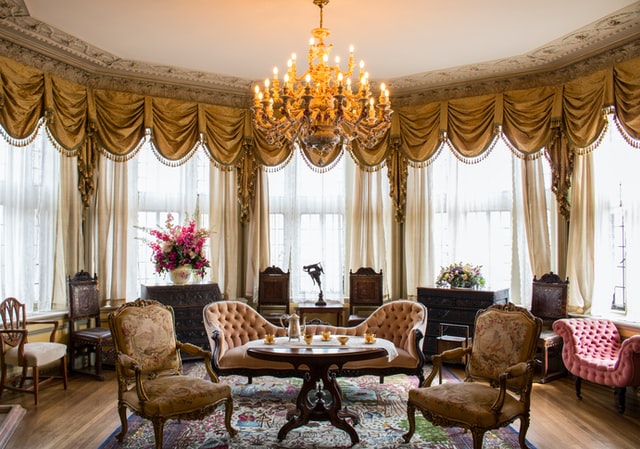Whether you are considering repainting your kitchen cabinets or repairing an old piece of furniture, it is always important to know the difference between antique and satin finishes so that you can find the best style for you.
Contents
While both finishes can achieve a beautiful and timeless look, there are key distinctions between the two.
The type of finish you decide on will ultimately depend on your style, budget, and personal preferences.
What is an Antique Finish?

An antique finish is a dark, aged look that is achieved by applying a dark stain or glaze to the surface of the wood. This finish is often used on furniture and cabinets to give them an old-world appearance.
What is a Satin Finish?

A satin finish is a smooth, glossy finish that is achieved by applying a clear sealer or topcoat to the surface of the wood. This finish is often used on floors and countertops to give them a sleek, modern look.
The Differences
Looks. The main difference between antique and satin finish is that the former is a smooth, glossy surface with a matte sheen while the latter has more of a lustrous shine. An antique finish makes the wood or metal look dull, aged, and weathered while a satin finish gives the surface a bright, smooth, modern look and feel.
Style. Antique finishes are popular with traditional home styles, while satin finishes are preferred by contemporary and minimalist design styles.
Durability. Antique finishes also tend to be more durable, making them ideal for high-traffic areas or pieces that will see a lot of wear and tear. On the other hand, satin finishes can be more difficult to touch up, so they may not be the best choice for areas that are prone to nicks or scratches.
Ease of Maintenance. When it comes to maintenance, satin finishes are generally easier to clean than antique finishes. Satin finishes can be cleaned with a damp cloth, while antique finishes may require more careful cleaning to avoid damaging the finish. Although sometimes that can add to the charm.
Cost. The cost of an antique or satin finish will vary depending on the type of wood, the quality of the stain or sealer, and the size of the piece. In general, antique finishes will be more expensive than satin finishes because they require more work to achieve the desired look.
Now that you know the difference between antique and satin finish, you can decide which is the best choice for your project.
If you are looking for a classic, timeless look, an antique finish may be the right choice for you. If you prefer a modern look, or if you are working with a piece of furniture that is prone to damage, a satin finish may be the better option.
How to Achieve These Looks
Antique Styles

Antique finishes can be a great way to add character and personality to your home. There are many different techniques that can be used to achieve a variety of looks. Ultimately, the best way to choose a method is to experiment and see what looks best to you.
Paint Distressing: This is a technique that is often used on wood furniture. It involves painting the piece first and then sanding or distressing the paint to create a worn look.
Staining: This is a common method that is used to create an antique look on wood. It involves applying a dark stain to the piece and then wiping away the excess to create a desired aged effect.
Gilding: This is a process that involves applying a thin layer of gold leaf or gold paint to the surface of the piece. This is often done to create an antique look on furniture or picture frames.
Crazing: This is a method that is often used to create a cracked or distressed look on painted surfaces. It involves using a special glaze or top coat that is designed to crack as it dries.
Satin Styles

There are several different types of satin finishes that can be achieved depending on the desired look.
Flat/Matte: This is a very common type of satin finish that is often used on walls and ceilings. It gives the surface a muted shine and helps to hide imperfections.
Eggshell: This is a slightly glossier version of the flat/matte finish. It's often used on walls and ceilings in high-traffic areas because it's more resistant to dirt and fingerprints.
Satin: This is a glossy finish that is often used on woodwork and trim. It gives the surface a shiny appearance and highlights the grain of the wood.
Semi-Gloss: This is a high-gloss finish that is often used on cabinets and trim. It gives the surface a very shiny appearance and is easy to clean.
High-Gloss: This is the shiniest type of finish and is often used on doors and floors. It's very easy to clean but can show imperfections more easily.
How to Paint These Styles on Wood
Antiqued Look

Step 1: Begin by cleaning the surface of your wood with a tack cloth or denatured alcohol to remove any dirt, dust, or grease.
Step 2: Next, apply a dark stain or glaze to the surface using a brush, rag, or sprayer to prime the surface.
Step 3: Allow the stain or glaze to dry completely before applying a top coat of paint or varnish.
Step 4: After the paint has fully dried, use sandpaper to lightly rub the edges of the wood. Make sure to do this by hand, as an electric sander will be too powerful and take off too much paint.
Step 5: Restain the wood. Make sure your stain colour is uniform and consistent before applying it, then lightly dab it on with a clean cloth. Wipe the stain away with a clean cloth as soon as possible after you've applied it. If the staining comes out too dark, lightly sand again.
Step 5: Once you're satisfied, layer a clear coat of paint over the surface to give it extra protection against scratches and marks.
Satin Look

Step 1: Begin by sanding the surface of your wood with fine-grit sandpaper to create a smooth surface. Make sure to remove dust and dirt from the surface once you're finished.
Step 2: Get a pad of 0000 steel wool. Make sure that the wool you choose is not inconsistent or too oily as this can make it very difficult to achieve a uniform rub.
Step 3: Add paste wax to the surface of the steel wool. It's important to make sure that the wax is applied evenly so that the final finish will be consistent.
Step 4: Use the steel wool to rub the surface of the wood in a back-and-forth motion until you've achieved the desired satin finish. Start with the edges of the wood, then move inward, going with the grain. Keep your hands flat to avoid rubbing too roughly in one spot.
Step 5: Wipe away any excess wax with a clean cloth. If there is still too much wax on the surface that you can't remove, add a small amount of cold water to the surface (which congeals the wax) and gently rub a new clean steel wool pad over the wood. This will help get rid of the unwanted wax.
Step 6: Apply a top coat of paint or varnish to the wood to protect the finish. Allow it to dry completely before using or handling the piece.
Antique vs Satin in Jewelry

While these terms are most commonly used when referring to furniture, they can also be applied to jewellery.
Antique Finish. The antique finish is a dull matte look and is quite popular. An antique finish on jewellery is achieved by adding a patina to the metal. This is often done by using a chemical solution or by heating the metal. This kind of finish gives the metal a very vintage, aged look that is well received by many consumers.
Satin Finish. The satin finish produces a muted gloss shine in jewellery. A satin finish is achieved by buffing the metal with a rougher material like sandpaper (similarly to how it's done with wood). This results in a more even, reflective surface. It is not as shiny as high polish, but gives a nice, understated shine and look to the overall design. This type of finish is ideal for those who are looking for something more subtle than a mirror polish.
Knowing the difference between finishes can help you make better decisions when ordering jewellery.
Conclusion

When it comes to choosing between an antique and satin finish, it really comes down to personal preference. If you prefer a more aged vintage look, then an antique finish is probably the way to go. But if you want a little bit of a modern shine, then a satin finish might be the right choice for you.
No matter which finish you choose, be sure to take the time to test it out on a small area of the wood before you commit to the project.
Ultimately, the decision is yours!




